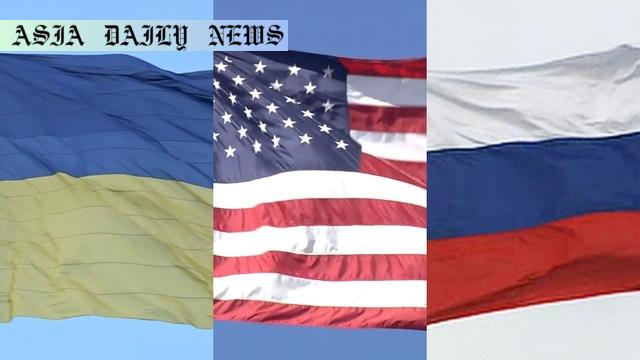Ukraine Conflict highlights the ongoing gap in peace terms between Russia and Ukraine, which US officials say requires a breakthrough soon.
Ukraine Conflict continues, highlighting a lack of consensus between Russia and Ukraine.
US officials emphasize the need for a diplomatic breakthrough.
Fighting remains fierce, with devastating drone attacks and casualties reported.

Ongoing Ukraine Conflict: A Complex Geopolitical Crisis
The current conflict between Ukraine and Russia remains a devastating and ongoing geopolitical crisis. Despite international efforts, U.S. officials VP JD Vance and Secretary of State Marco Rubio have acknowledged that an immediate cessation of hostilities is unlikely. Both nations, entrenched in their positions, appear to know each other’s peace terms but remain far apart on reaching an agreement. This lack of consensus underscores the complexity of the situation, pointing to deep-rooted disputes and mistrust.
Vice President Vance’s statement suggests that the road to peace is fraught with significant challenges. His remarks, combined with Secretary Rubio’s assertion on the need for a breakthrough, paint a grim picture for any immediate diplomatic resolution. These statements come as a stark reminder that even with ongoing negotiations, the road ahead remains unpredictable and full of hurdles. The potential for escalation adds another layer of concern, highlighting the critical need for sustained international focus and intervention.
Ground Realities: Escalation of Hostilities
On the ground, the reality of the conflict grows bleaker by the day. The Ukrainian Air Force reported that Russian forces launched a staggering 150-drone attack, marking one of the largest-scale assaults in recent months. Out of these, 64 drones were successfully intercepted, but the scale of attacks directly reflects Russia’s relentless aggression. The southern Ukrainian city of Zaporizhzhia bore the brunt of these strikes, with 29 people reportedly injured, including a child. The physical and psychological toll on Ukrainian civilians is mounting, marking an indelible scar on the country’s landscape.
These developments emphasize the horrific costs of war. Civilian safety continues to be jeopardized, with lives lost and infrastructure ravaged across key regions. International humanitarian agencies are doing their best under constrained conditions, but the sheer scale of the crisis demands urgent global attention. Additionally, the joint U.S.-Ukraine deal for natural resources may offer some long-term economic relief, yet critics argue this could further complicate relations with Russia.
Global Implications and the US Role
The conflict has broader ramifications both regionally and globally. The strained relations between major powers continue to polarize international politics. U.S. President Donald Trump’s earlier claim of resolving the crisis “in 24 hours” has been met with skepticism. While such promises appeal to his voter base, experts argue that resolving this multi-layered conflict requires a combination of political will and diplomatic expertise, far beyond any short-term measures.
Furthermore, U.S. involvement in the form of resource-sharing agreements shows Washington’s alignment with Ukraine but simultaneously raises questions about global diplomatic balance. Will such actions further alienate Russia, or will they be interpreted as proactive problem-solving strategies? This remains a topic of intense debate among policymakers and commentators. Regardless, the spotlight remains on how the U.S. shapes its strategies for attaining peace without exacerbating tensions.
Commentary
Understanding the Complexity of the Ukraine Conflict
The Ukraine conflict is a stark reminder of how deeply intertwined geopolitics, history, and human suffering can be. The ongoing fight between Ukraine and Russia has not only devastated millions of lives but also highlighted the challenges of achieving lasting peace. U.S. officials’ recent comments only reinforce that peace remains as elusive as ever, requiring a breakthrough from both sides. Negotiation failures and continued violence underline the desperate need for new approaches, focusing on compromise and dialogue.
The Staggering Human and Political Cost
At the heart of this conflict lies the astonishing human cost. Civilian casualties, mass displacements, and shattered economies tell a tragic tale of prolonged warfare. The drone attacks in Zaporizhzhia are only the latest chapter in a chronicle of suffering, and these events draw attention to the failure of existing mechanisms to protect the vulnerable. This must serve as a wake-up call for global leaders to re-evaluate their priorities.
Politically, the situation is no less volatile. Russia and Ukraine’s inability to align on peace terms serves as a catalyst for prolonged fighting. Simultaneously, Western nations face the challenge of balancing support for Ukraine with the pursuit of broader stability in global alliances. This ongoing recalibration of geopolitical dynamics ensures the conflict remains relevant far beyond its immediate borders.
Hope for the Future: The Role of Global Diplomacy
Despite grim forecasts, there’s still room for hope. Meaningful diplomacy, backed by multinational support, could pave the way for gradual de-escalation. Moreover, international entities like the United Nations and neutral third-party mediators have critical roles to play in bridging the trust deficit between the warring sides. Effective resolution will require innovative strategies, global cooperation, and persistence.


